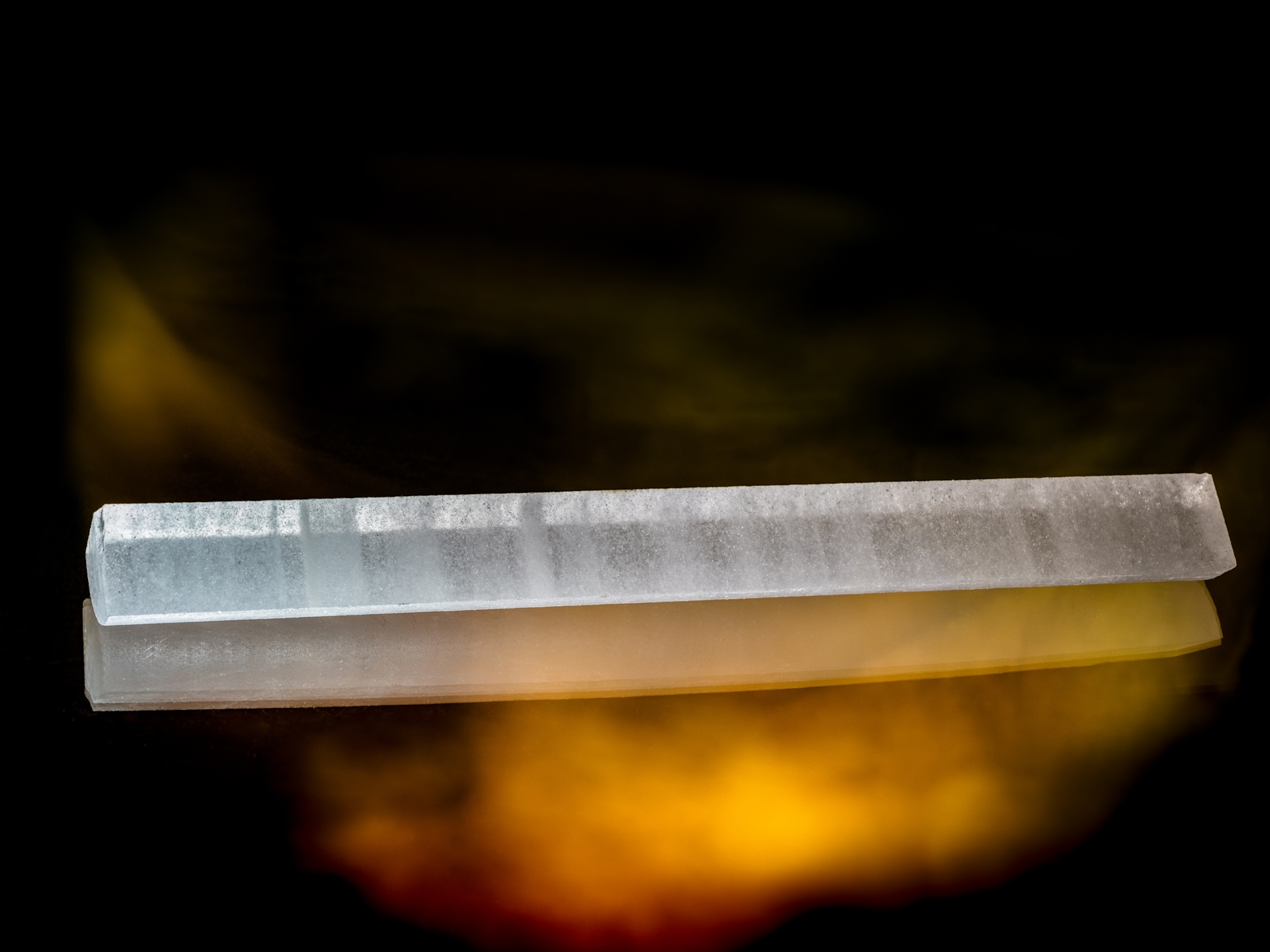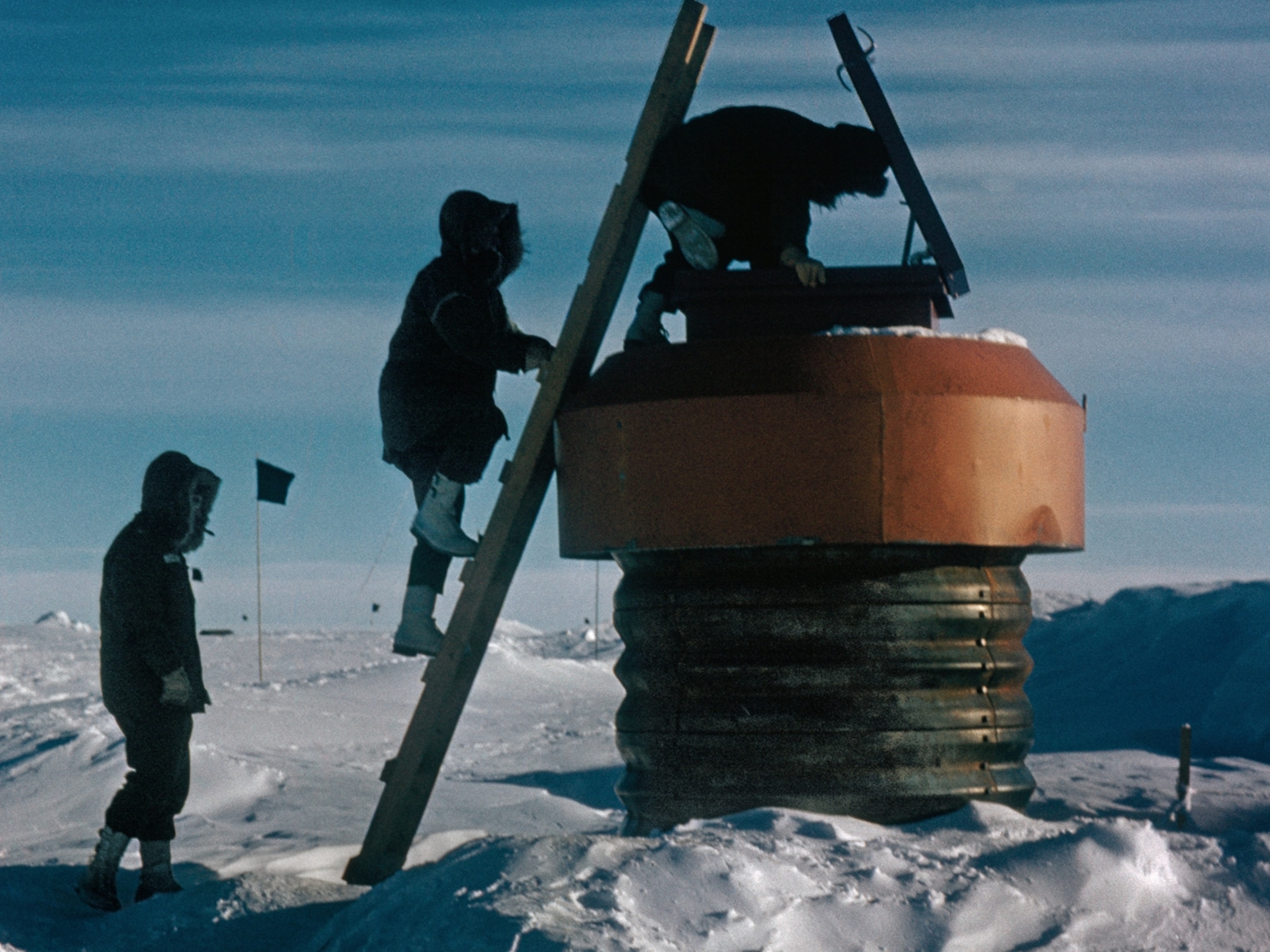Shrinking Arctic Ice Prompts Drastic Change in National Geographic Atlas
Warming oceans have caused a drastic reduction in sea ice.
The shrinking of the Arctic ice sheet in the upcoming 10th edition of the National Geographic Atlas of the World is one of the most striking changes in the publication's history, geographers say.
The reduction in multiyear ice—commonly defined as ice that has survived for two summers—is so noticeable compared with previous editions that National Geographic Geographer Juan José Valdés calls it "the biggest visible change other than the breakup of the U.S.S.R."
As the ocean heats up due to global warming, Arctic sea ice has been locked in a downward spiral. Since the late 1970s, the ice has retreated by 12 percent per decade, worsening after 2007, according to NASA. May 2014 represented the third lowest extent of sea ice during that month in the satellite record, according to the National Snow and Ice Data Center (NSIDC).
Ice loss is accelerated in the Arctic because of a phenomenon known as the feedback loop: Thin ice is less reflective than thick ice, allowing more sunlight to be absorbed by the ocean, which in turn weakens the ice and warms the ocean even more, NASA says.
Because thinner ice is flatter, it allows melt ponds to accumulate on the surface, reducing the reflectiveness of the ice and absorbing more heat. (See pictures of our melting world in National Geographic magazine.)
"You hear reports all the time in the media about this," Valdés said. "Until you have a hard-copy map in your hand, the message doesn't really hit home."
Arctic Mapping
The multiyear ice—or older ice—is shown on the map as a large white mass; the maximum extent of sea ice—the pack ice that melts and refreezes with the seasons—is depicted as a line on the map, according to Rosemary Wardley, National Geographic's senior GIS cartographer. In the 10th edition, which will be released September 30, the multiyear ice is much smaller in area than on previous maps. The 5th edition of the atlas, published in 1989, was the first to comprehensively map the Arctic.
Wardley and Valdés relied on two government resources that track Arctic ice data: NASA and the NSIDC. To map the multiyear ice, they took data from a 30-year study by NASA, published in 2012. "We wanted to have that comprehensive coverage," Wardley said.
But Walt Meier, a research scientist at NASA Goddard Space Flight Center's Cryospheric Sciences Lab, said he's concerned that the map leaves out some important details that might mislead the public.
He noted that the 10th edition should show the total area of the existing ice at the end of the summer, which would include the remaining ice that was newly formed over the previous winter.
Scientists call that the total minimum sea ice cover, and it's measured in September. (Total maximum sea ice cover is measured in March, at the end of winter.)
Without the minimum sea ice mapped, "ice that's one year old or less is not being shown," he said.
"Personally, my thought is that it would be best to show the entire end-of-summer ice cover in white—which is how it generally would appear in a photo from above [without clouds]—with the multiyear area outlines or maybe offset in a different shade to highlight it. At the least, I think it would be good to put a clear line [to] denote the minimum extent," he said.
"Ultimately," noted Meier, "it is an editorial decision as to what to show and how."
Confirms Wardley: "We do not show the minimum extent simply because there is only so much information we can put on the map before it becomes confusing to the user."
Variable Ice
Meier is also concerned about relying on a single year-the new Arctic map draws from 2012 data, an extremely low year for ice cover. (Related: "Arctic Sea Ice Hits Record Low—Extreme Weather to Come?")
"If 2012 is shown, it is the record low year and probably overemphasizes the long-term trends. But if 2013, a higher year relative to recent years, is shown, it underemphasizes the trend. A potential solution would be to do an average over a few years."
Valdés responded: "At the time of production of this map we were only able to find multiple sources from 2012, including the main source we used ... showing multiyear sea ice trends over a 30-year period."
Publication schedules have an impact as well.
"We are aware that the multiyear ice is constantly shifting and can change as often as every few months," he said. "That is certainly a challenge we have with these static maps, along with the fact that the production date is oftentimes many months earlier than the publication date of the map."
Representing a dynamic environment in fixed form is always a challenge, said Valdés. Even so, atlases "open people's eyes to what's happening the world." (Explore National Geographic's atlas puzzles.)





